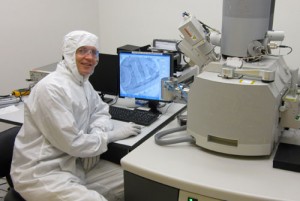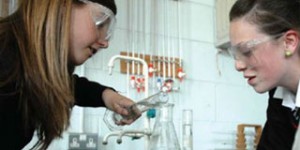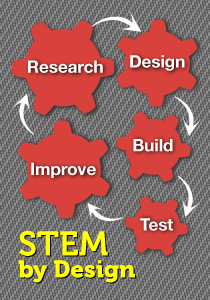STEM: The Teacher’s Dilemma
A MiddleWeb Blog
I had a haunting conversation with a 7th grade science teacher – I’ll call her Sara – this week. Actually, I guess Sara was the one who was haunted – haunted by the possibilities of what STEM could mean in her classroom, if she could just pull it off.
Her frustration was palpable. She knew what she needed to do. She believed deeply that it would bring learning alive for her students. She intensely wanted to do it, but she was floundering.
Sara had attended an NSTA conference and joined the STEM sessions. Excited and inspired, she pictured turning her classroom into a STEM center. Science lessons would turn into real-world challenges involving math, engineering, and technology. However, facing the predictable realities of the school day, Sara now felt that she was dragging a weight as she worked to design a STEM lesson.
Across the hall and several doors down sat an equally frustrated math teacher. Each year Maya’s students seemed to lose interest as math became more difficult and abstract. “And what use is this anyway?” they would ask her. Why should they learn it?
Maya wanted a real-world application that would help them engage more fully with the math and understand the vital role of math in solving real problems. She, too, was interested in a STEM approach.
Reasons for the dilemma
Both of these teachers are moving toward the same goal – alone – and feeling increasingly overwhelmed. Can you guess what roadblocks Sara, Maya, and other teachers might face as they try to implement STEM curriculum? These statements may sound familiar.
• “My school system has an obsessive focus on student testing, and that’s all they want me to teach toward – test objectives, test objectives, test objectives.”
• “Our course of study has so many objectives to teach that I don’t have the time to go deeply into any one area – at least, not in the way that STEM teaching requires.”
• “I have no control over what I teach or when I teach it. I have to stay with the pacing guide. I even have to teach flowering plants in January!”
• “I don’t have time to teach STEM curriculum. In fact, I don’t even have time to plan STEM lessons. And I don’t have materials and equipment for hands-on activities in all the classes I teach.”
I could go on, but if you are a teacher, you probably know any other reasons I might mention. If you’re not, these four comments will give some sense of the problem. So I’d like to focus on the biggest barrier I think teachers face:
Most teachers are not adequately prepared and equipped to teach STEM.
As a science teacher, I would probably have the science knowledge required to guide students as they navigate through STEM challenges. But my command of the engineering design process, mathematics, and technology would certainly need an upgrade. I’d have to come up with a real-world challenge and know how to put together STEM lessons. Think about the math teacher who needs to know how to integrate science, the engineering design process, and a hands-on approach into her lessons. That’s daunting.
Some STEM solutions
I think it’s only fair that we help teachers strengthen and develop the expertise they need to teach STEM. My idea of the perfect professional preparation and development opportunities would begin with a Class A teacher preparation program. (Perhaps we can create that teacher prep program in a later post. Send me your ideas.)
Then classroom teachers would need time and the opportunity to continue learning through ongoing professional development. Let’s look at some possibilities:
• Engineering experiences for teachers. These might be summer programs that allow middle-school teachers from STEM fields to work with engineers and scientists. Are there industries in your area that might provide those opportunities?

• Higher education partnerships. Nearby colleges might provide subject area updates to keep K-12 teachers of math and science on the STEM cutting edge.
• Ongoing in-school collaboration among science and math teachers. Support is urgently needed so that teachers in these core STEM subjects can continue learning in their content areas, work together to develop and coordinate lessons, assess the impact on students, and hold each other accountable for incorporating STEM into their lessons.
Just between us, that last bullet is the blue ribbon winner in the “solutions” category. Why not start a professional learning team to focus specifically on learning and teaching STEM? Without regular, supportive collaboration, intended changes in classroom teaching often don’t stick. Imagine that all teachers of math and science in your school are on board with teaching STEM and are continually working together to improve their teaching in this area. Imagine that school and system leaders have the courage to step off the test prep train and support a project- and inquiry-based approach to instruction. Would all this make a difference for your students?
Despite pressures and roadblocks, well-prepared teachers who have opportunities for continual learning can succeed at developing successful STEM classroom initiatives.
STEM resources at your fingertips
I’d be remiss to leave you thinking that you must always develop your own STEM lessons. Actually, you can build quite an extensive toolkit of resources from a number of reputable Internet sites. I’ll list a few of them in this post and invite you to do the same in the “Comments” section. Perhaps this STEM Resources section will become a regular feature of STEM Imagineering posts.

• Intel Design and Discovery site focuses on guiding students ages 11-15 to experience engineering through the design process. This site offers a comprehensive inquiry-based curriculum which introduces students to all the components of a good STEM project.
• The Teach Engineering digital library provides teacher-tested, standards-based engineering content for K-12 teachers to use in science and math classrooms. Engineering lessons are mapped to educational content standards. In addition, suggested materials are usually inexpensive, and activities are relevant to children’s daily lives.
You’ll find all of Anne’s STEM Imagineering posts here.































Anne, you have written some powerful words here and shared some great resources. As a learning disabilities teacher who co-teaches in math and science (as well as ELA and Ancient World History), I think the collaboration piece is integral to helping all of our students. My math partner and I are part of the Pointcare Institute (a STEM funded math course) and without our weekly meeting with our two other math cohort members I could never solve the weekly challenges. One of the best “side effects” of collaboration is a seoond opinion about projects, lessons, activities and assessments.
Thanks, Laurie . . . I certainly agree 100% with the importance of collaboration. With the learning needs changing at such a rapid pace, isolated teachers may soon become the dinosaurs of the profession. Face-to-face and virtual collaboration can bring an amazing amount of expertise, encouragement, and support in a cycle of continually upgrading our skills and knowledge. Somehow we have to get the word out and just do this thing!